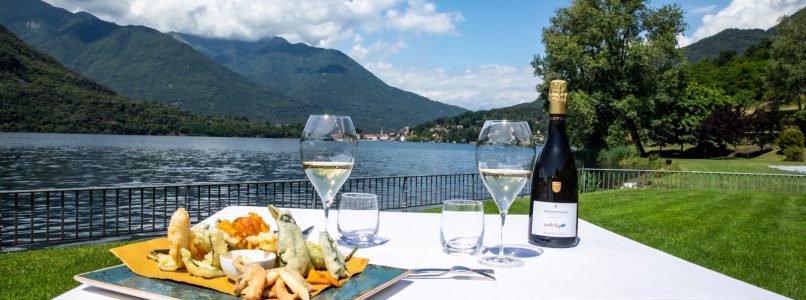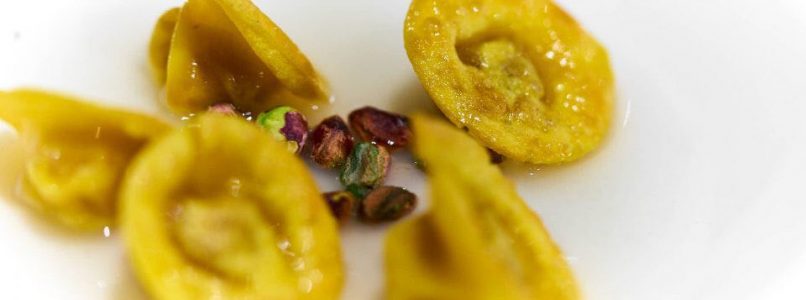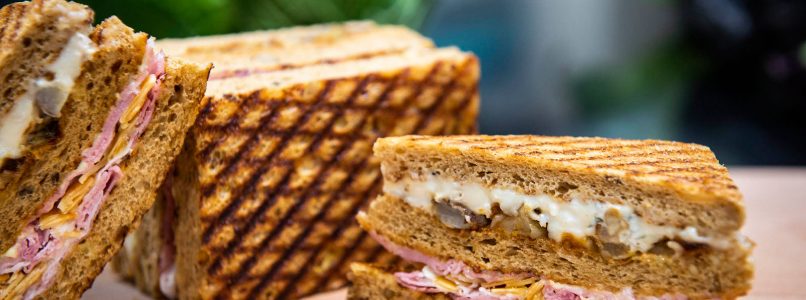A bistro where weddings were held, a boat for picnics, a different menu for gourmet. The Piccolo Lago in Mergozzo is a good example of how good chefs and patrons are reacting to post-Covid-19 problems
The Little Lake of Mergozzo (VB) is not the only (bi) starred restaurant that presented itself at the reopening in a different guise. From the Alps to Sicily, it is a flourishing of temporary for the summer or of places where the people have moved city cooks. However, the transformation of Marco Sacco's restaurant impressed us particularly, starting from the history of the chef-patron, who grew up between the family restaurant and the important experiences in France. Great traveler (and excellent windsurfer in his youth), but fiercely attached to his territory, and perhaps for this reason underestimated by critics. The paradox wants that the moment Sacco started to go out home – with the management of Floor 35 in the Intesa Sanpaolo skyscraper in Turin and the opening of Castellana Restaurant in Hong Kong – the hit of Covid-19 has arrived. That applies to all his colleagues, but in a culinary frontier post such as Mergozzo (closer to Switzerland than to Milan or Turin) the recovery is more difficult. It takes passion, courage and the desire to reinvent yourself. Going back to the ancient, to see the future.
A small beach on the lake
«Without rhetoric, rest led me to think that this splendid work must always be done and in any case knowing how to have fun, through a tranquility in taking on the commitments and efforts of daily work, says Sacco. And here is the transformation of the garden below the suspended structure of the steak: practically a small beach, open from 10 in the morning where you can relax in the garden, have lunch in the middle of nature, sunbathe, enjoy a gourmet snack and a very fresh ice cream or choose the moment of the aperitif or an after-dinner, since – except on Sundays – it is also open a lounge bar from 19.30 to 22.00. All in front of the waters of the cleanest pre-Alpine lake in Europe, where you can sail only by sailing, paddling or using an electric propulsion hull. Speaking of the lake, an original boat picnic was also created, which allows you to explore Marco Sacco's water and kitchen in three hours. Because together with a box with everything you need for lunch or dinner (including water and wine), there is a map of the lake with the itinerary to follow and what to eat, step by step. More distancing than that!
Five boxes in the bistro
And then there is the kitchen. Il Piccolo Lago gourmet is alive (and fight with us), but only for dinner, from Wednesday to Sunday: two tasting, innovative and historic, at 150 euro plus a 70 euro pairing. A security between present and past, where technology is at the service of the raw material that is often sought directly by the chef. The bistro has fun. "We in the kitchen first: the boys realized it when I forbade the vacuum and the surrounding area for the menu," says the chef. "I focused on Italian spirit and simplicity, thinking about the environment and what customers can look for in such a space, especially at the weekend." Attention to the concept of simplicity: it is apparent precisely because the but no it is of an expert cook, steak, open-minded. This is how dishes like the Caprese, lo Spaghettone with tomato, Vitello tonnato, the Mixed fried lake, the Grissinopoli (a cutlet breaded in breadsticks) are enjoyed. You can choose from five boxes where the individual courses cost 6, 10, 14, 22 and 26 euros. «The watchword is not to upset, deny, rethink your own idea of cooking and your own style, but to open up to new customers or offer other faithful ones other moments to sit at the table: this is the time to do it, with passion and seriousness says Sacco.


